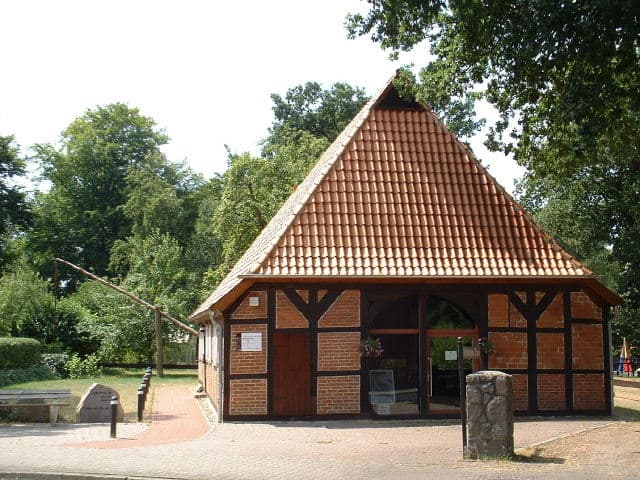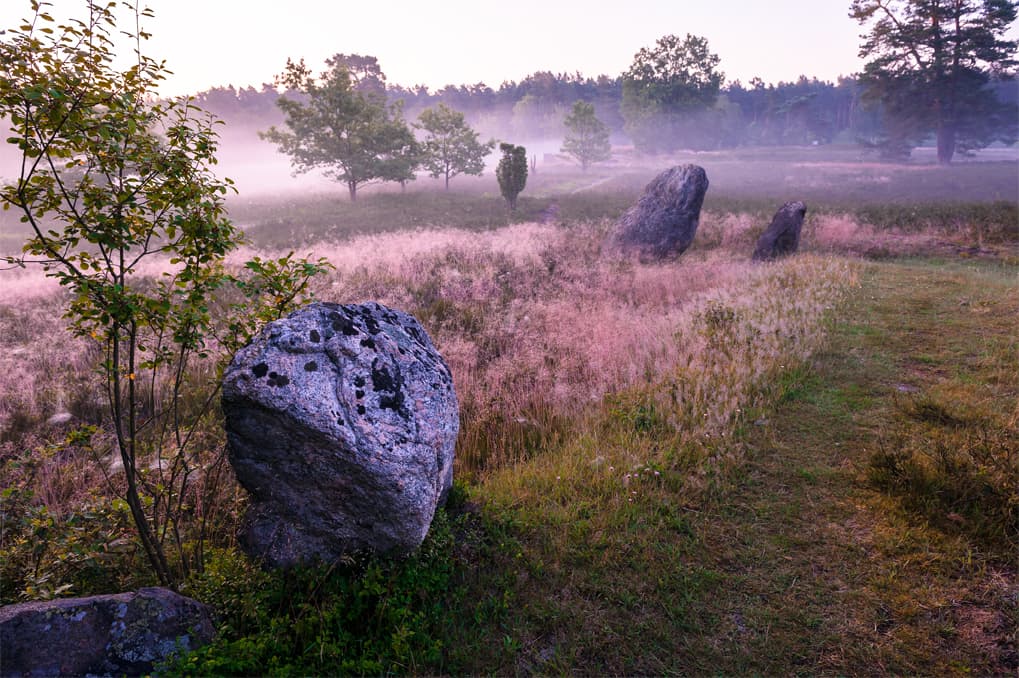
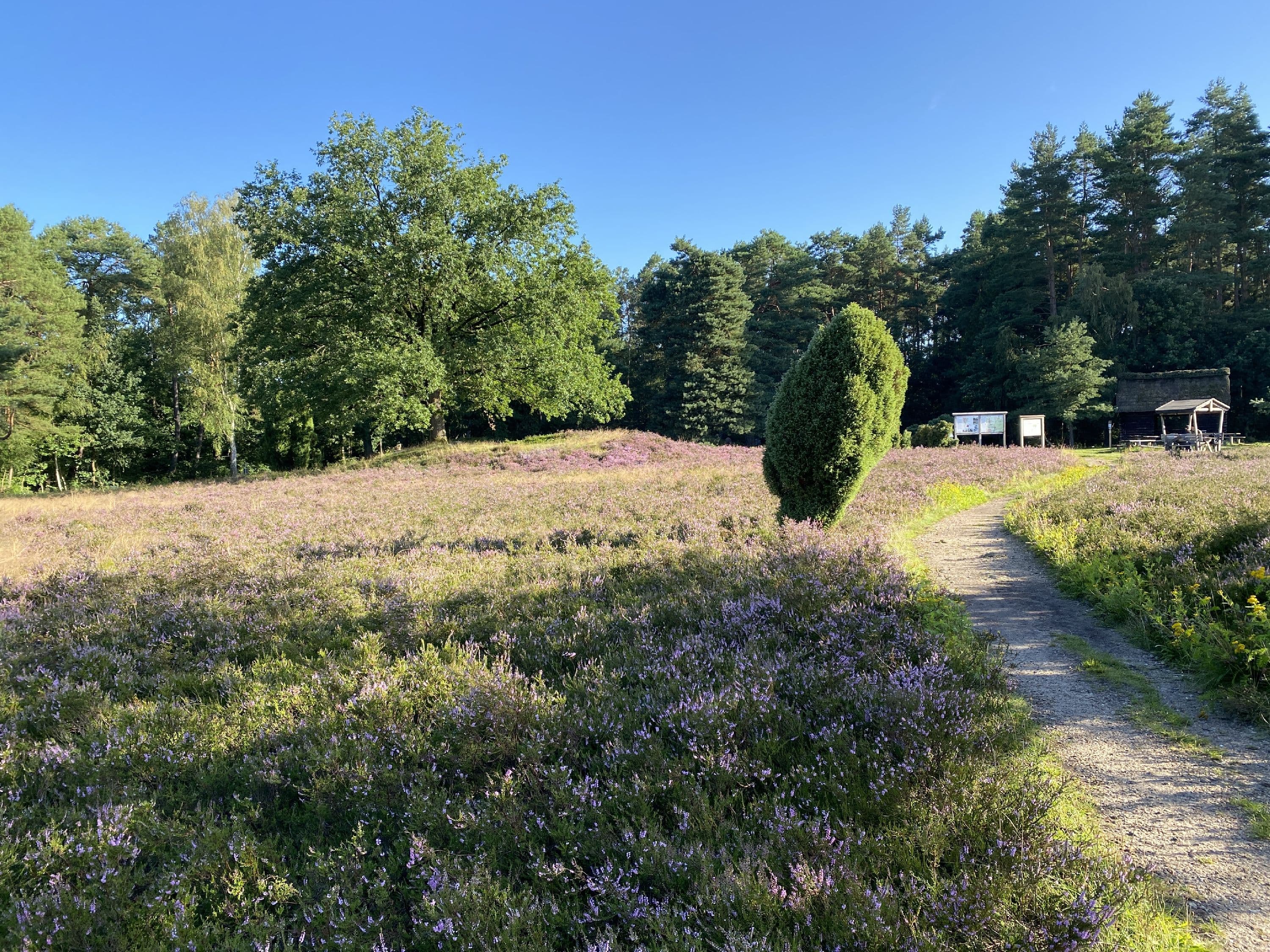
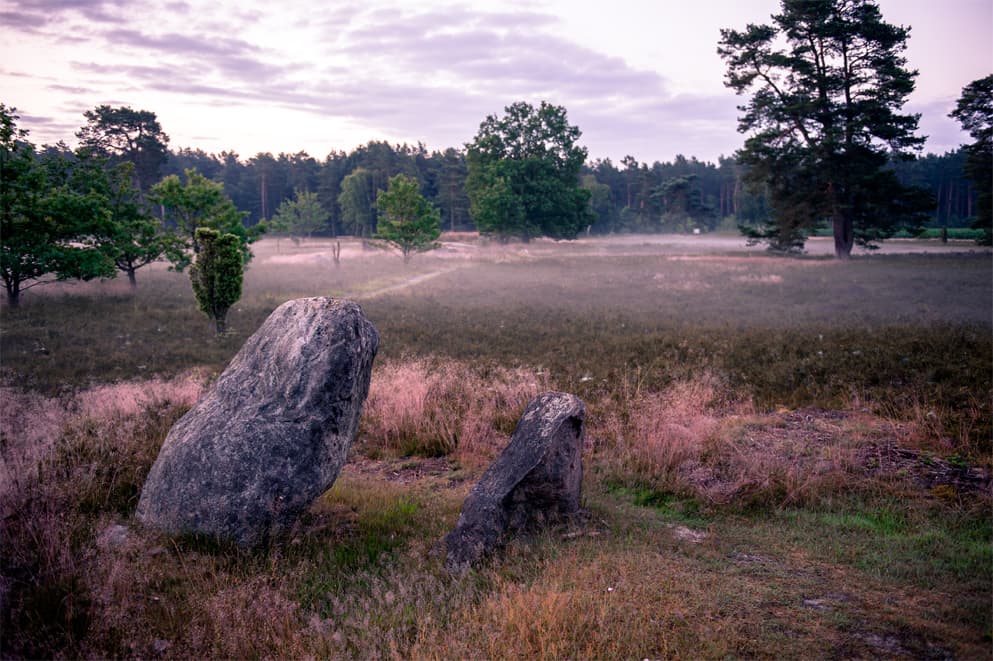

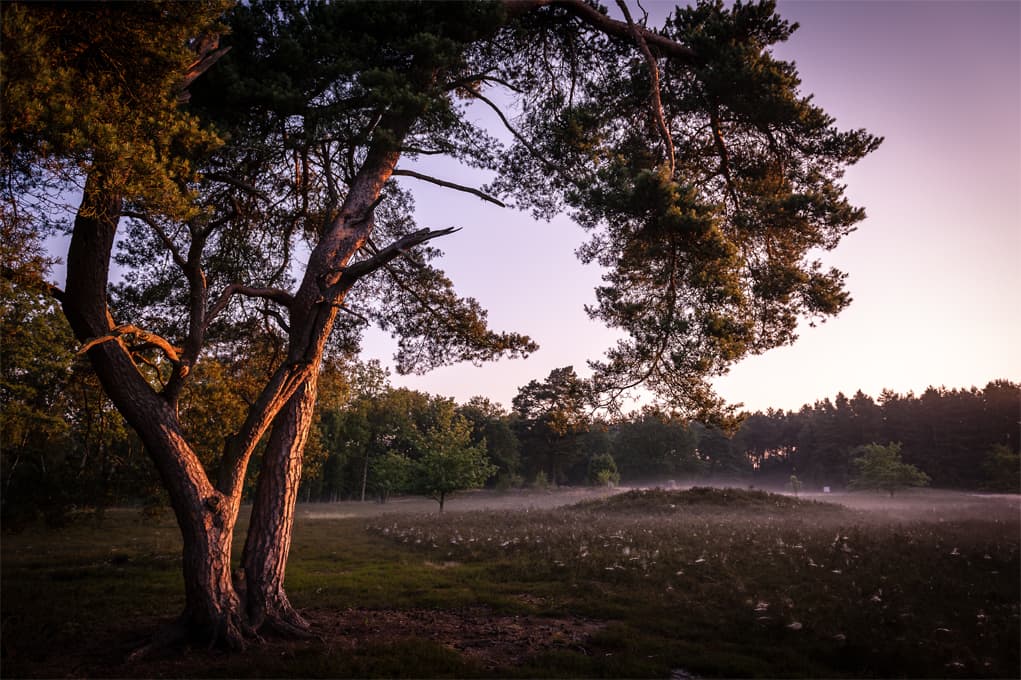
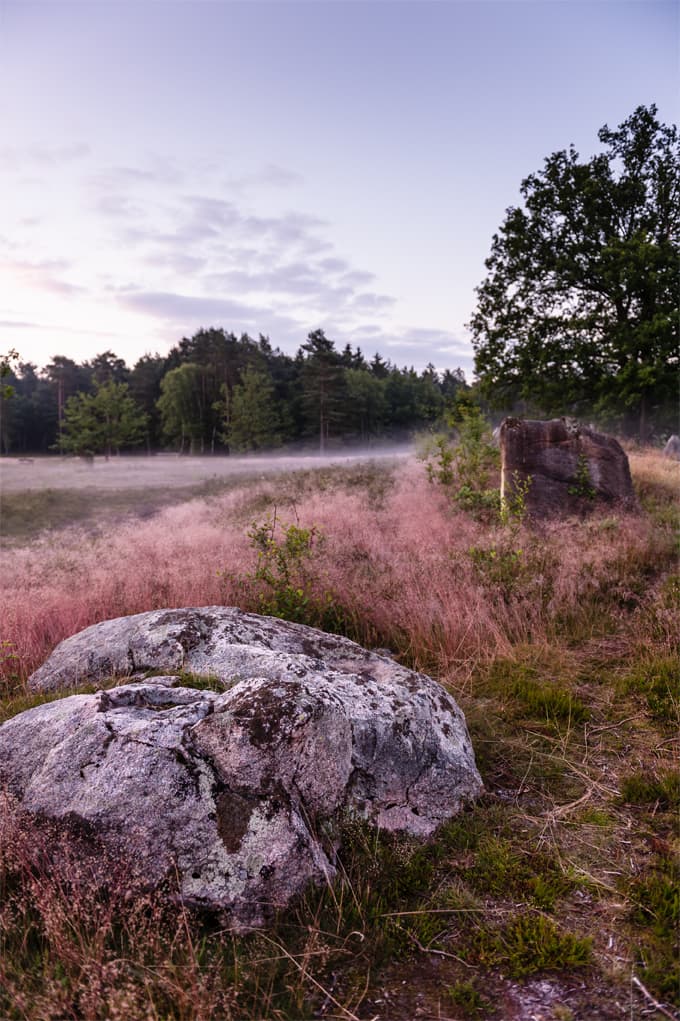
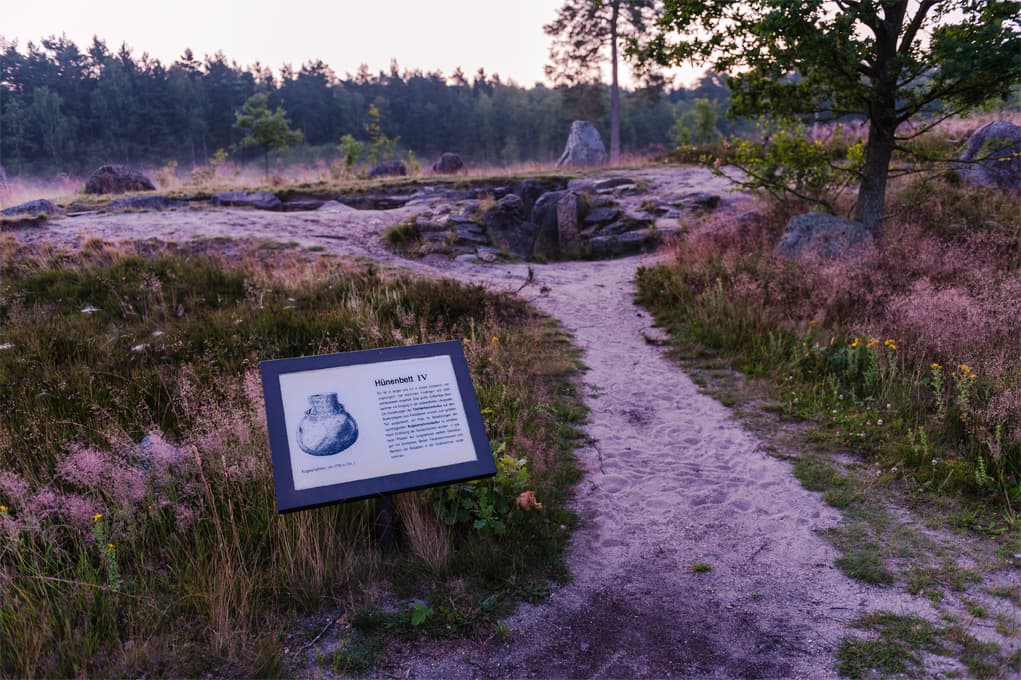
Heide und Hünengräber
Die Oldendorfer Totenstatt ist eine der mystischsten Anlagen in der Lüneburger Heide. 4000 Jahre Vergangenheit als Bestattungsfeld wirken im Sonnenuntergang oder Morgennebel besonders interessant.
Die Oldendorfer Totenstatt (ca. 1,5 Kilometer von der Ortsmitte gelegen) ist eines der interessantesten Steingräber des Landkreises Lüneburg und ein echter Anziehungspunkt. Diese Sehenswürdigkeit der Lüneburger Heide sollten Sie auf jeden Fall besuchen.
Hier befinden sich Fundplätze aus nahezu allen vor- und frühgeschichtlichen Epochen an einem Ort vereint.
Aus dem vorigen Jahrhundert stammt der erste Lageplan der Oldendorfer Totenstatt mit der dazugehörigen Nummerierung der Gräber, die bis heute beibehalten wurde. F. Laux, der Ausgräber der Totenstatt, hatte aufgrund der Keramikfunde und der entsprechenden Bauform der Großsteingräber einen Zusammenhang hergestellt, der es ihm ermöglichte, eine zeitliche Abfolge zu erkennen. Aus diesem Grund werden die Gräber chronologisch aufgeführt.
Das älteste Grab der Oldendorfer Totenstatt ist Grab III. Es ist ein sogenanntes "kammerloses Hünenbett", so benannt, weil innerhalb des 60 m langen und 7 m breiten, von Findlingen eingesäumten Erddammes keine Grabkammer aus Stein erkannt werden konnte. Erst die Ausgrabung erbrachte anhand von Bodenverfärbungen die Erkenntnis, daß es sich hier um eine hölzerne Grabkammer handelte.
Grab II unterscheidet sich in der Bauweise sehr von den anderen Hünenbetten. Statt in einem langen Erddamm liegt die Grabkammer in einem ovalen Rundhügel. Sie war ungerade vierjochig und 5,2 x 1,6 m groß. Die dort enthaltenen beiden Bestattungen konnten anhand ihrer Knochenreste als die eines ungefähr fünfzigjährigen Mannes und die einer etwa dreißigjährigen Frau bestimmt werden.
Grab IV ist eines der prächtigsten Großsteingräber des Landkreises Lüneburg. Ursprünglich dürfte die Zahl der Umfassungssteine etwa 108 betragen haben. Die Grabkammer bestand aus fünf Jochen. Von besonderem Interesse ist, dass dieses Grab und die darin aufgefundene Keramiken aus der Erbauerzeit das Ende der Megalithkultur im westlichen Landkreis Lüneburg markieren, während sie im östlichen Teil noch weiterbestand.
Die Grabhügel in und um die Totenstatt gehören der späteren Jungsteinzeit und der Bronzezeit an, die meisten sind jedoch (noch) nicht untersucht. Dasselbe gilt für 2 Urnenfriedhöfe der vorrömischen Eisenzeit und der Zeit der Völkerwanderungen, sowie verschiedener Fundplätze der älteren und mittleren Steinzeit. Offensichtlich war das Gelände der Totenstatt von jeher ein gern besuchter Ort.
Die Fundstücke, die in den Gräbern der Totenstatt gefunden wurden, können Sie im Archäologischen Museum Oldendorf/Luhe (Amelinghausener Str. 16b) besichtigen. Dort finden Sie auch die Dauerstellung "Wohnungen für die Ewigkeit. 5700 Jahre Oldendorfer Totenstatt".
+++AKTUELLES+++
Im August 2023 haben in der Oldendorfer Totenstatt Ausgrabungen stattgefunden. Hierbei handelte es sich um eine Forschungsgrabung des Niedersächsischen Landesamtes für Denkmalpflege, Lüneburg und der Gerda Henkel Stiftung. Ziel war, den Erhaltungszustand der Gräber zu prüfen, die Erhaltungsbedingungen der Bodendenkmäler auf dem angrenzenden Feld zu untersuchen und die Altgabungen aus den 60er/70er Jahren einzuordnen.
Ein besonderes Highlight der Ausgrabungen war die Wiederentdeckung und Untersuchung einer Baumsargbestattung im Grabhügel auf dem Feld. Hier wurde eine Axt vom Typ Jütländische Streitaxt aus dem Jungneolithikum bis zur frühen Bronzezeit (4400-2200 v. Chr.) gefunden. Diese Axt, in einem außerordentlich guten Zustand, feinpoliert und mit einer scharfen Schneide, wurde höchstwahrscheinlich importiert, da das Rohmaterial nicht aus der Region stammt.
Weitere Infos findet man im Archäologischen Museum Oldendorf/Luhe.

